Jungle school
I was very excited about this assignment, to go to Sumatra and take photos of the Orang-utans and the elephants, and have a tiny chance of seeing the Sumatran Tiger. My first stop would be the jungle school where young Orang-utans, taken care of after having been orphaned or been kept illegally as a pet, learn how to survive in the wild.

A strangler fig is a great play-ground for a young Orang-utan. © Daniel Rosengren
I instantly had two of them clinging on to me up in the tree, smiling brightly with their eyes.
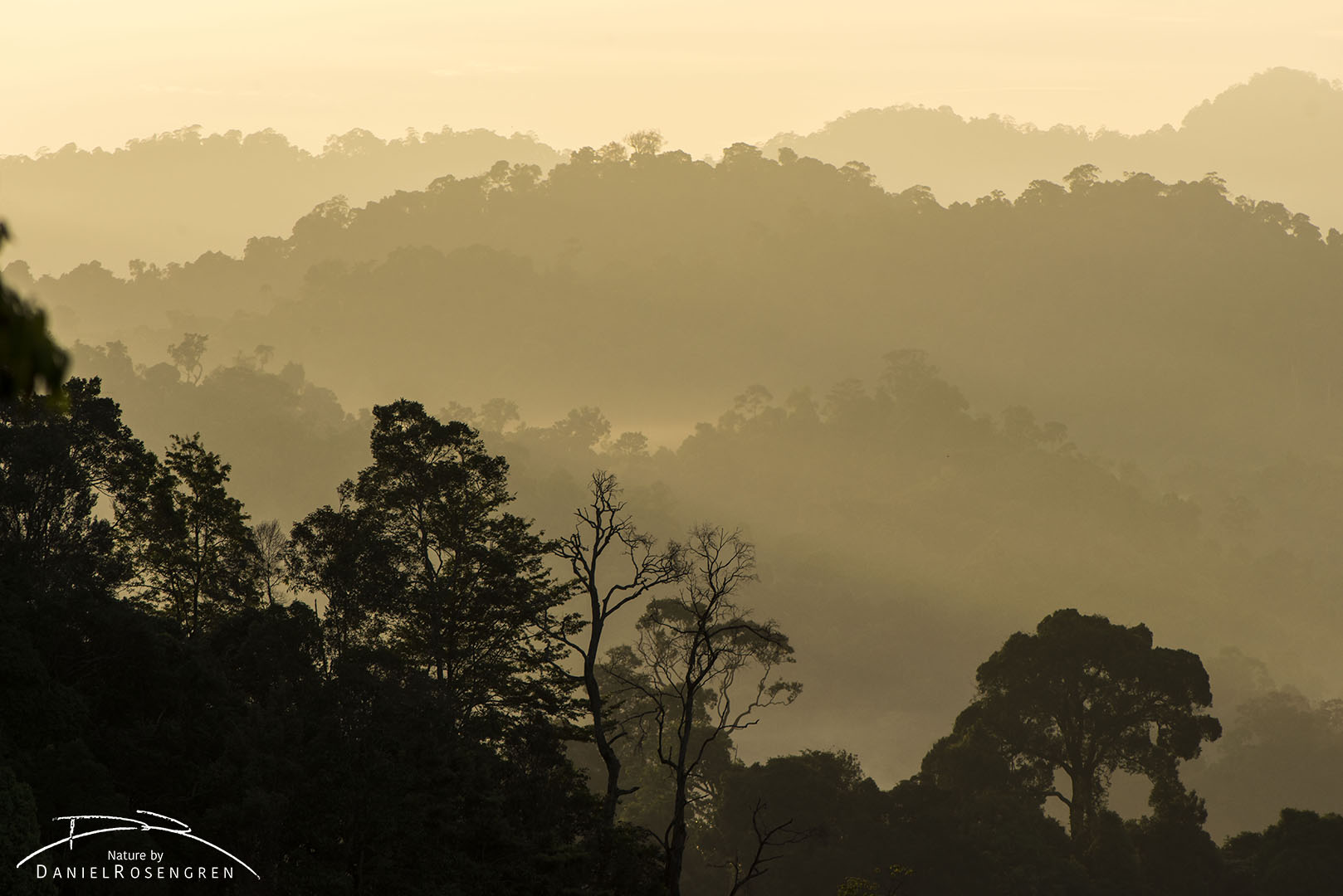
A view over Bukit Tigapuluh NP at sunrise, Sumatra, Indonesia. © Daniel Rosengren
Every day, their trainers bring them out to a part of the jungle by the Bukit Tigapuluh National Park. There, they get to practice their climbing skills, learn what can be eaten and what to avoid. Indeed, when some of them arrive, they have never touched a tree before. Younger and inexperienced Orang-utans get to spend time together with more experienced ones and learn a lot from them by watching and imitating.
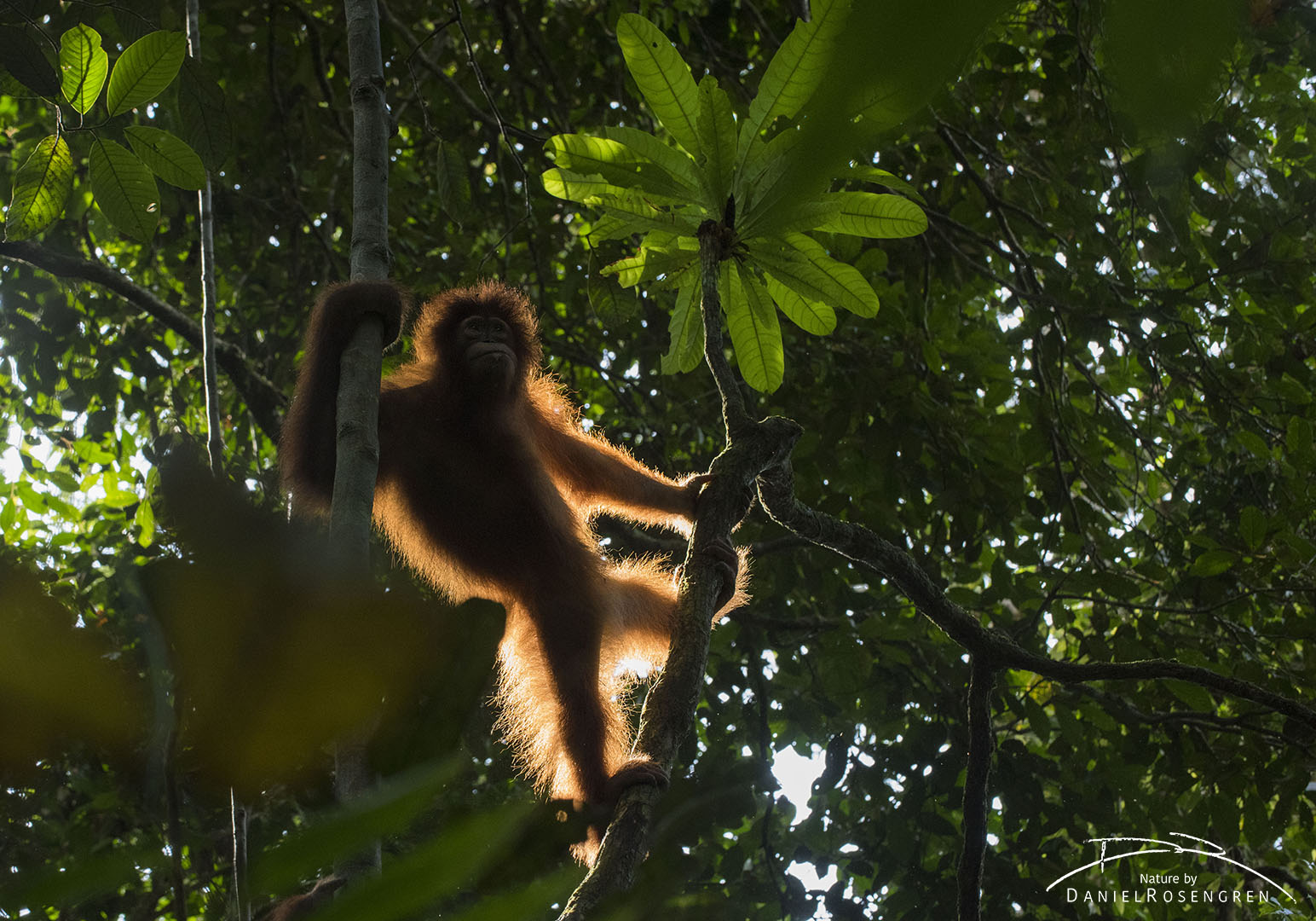
The sun is making the hairs of this Orang-utan to glow. © Daniel Rosengren
There is a lot to learn, climbing techniques, what branches are unlikely to hold (this one they learn the hard way), what fruits can be eaten, how to find water in the trees etc. To be able to find water up in the trees is important, because even though there is lots of water in the rivers, the ground is a dangerous place to be, the tiger could be stalking.
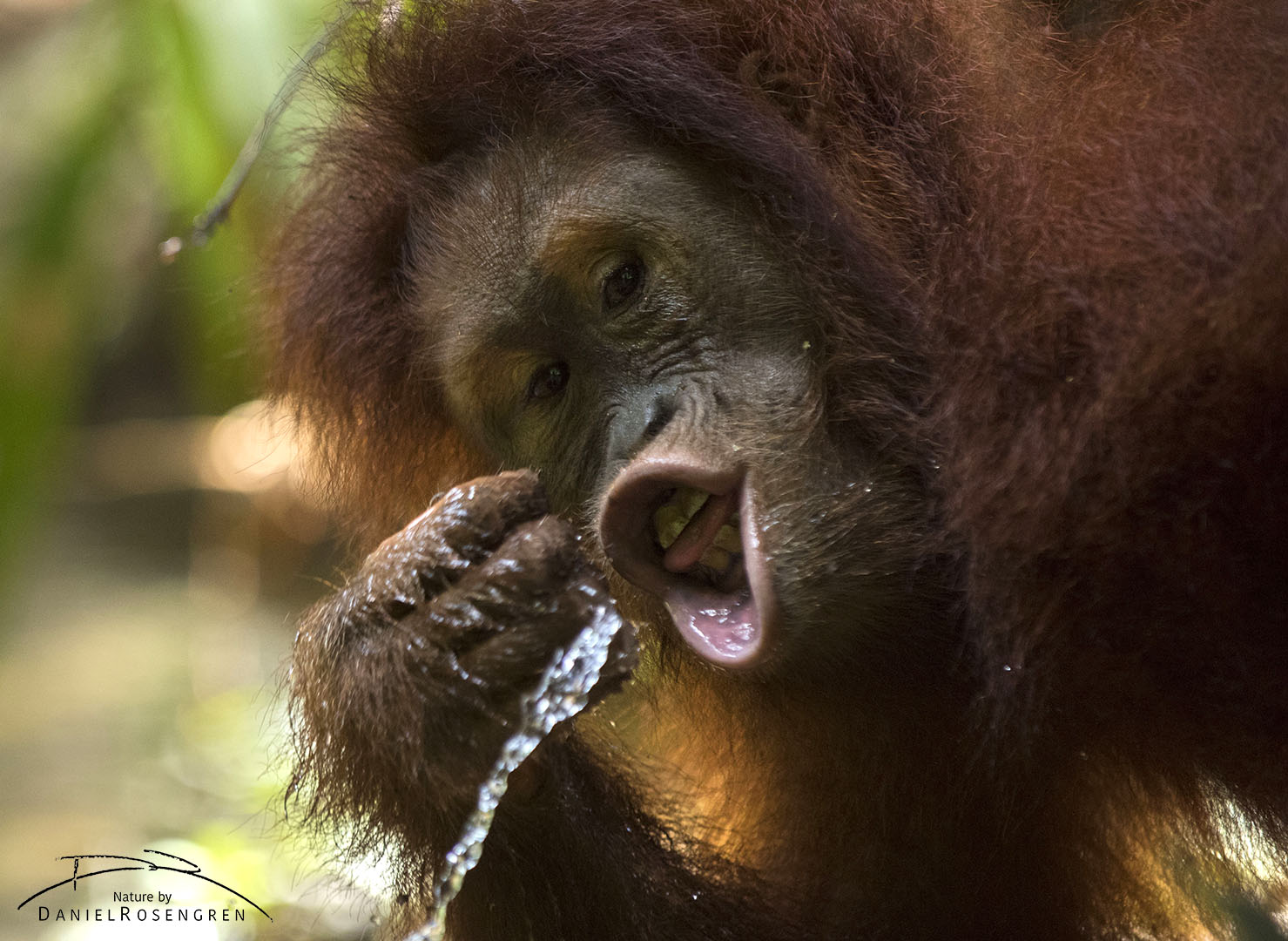
A young Orang-utans drinking water. © Daniel Rosengren
It took me quite a while before I got the hang of taking photos of these magnificent apes. They were moving around quickly, one second they were right next to me, the next far above. One second in dark shade, the next in bright sunlight. One second with dark background, the next with a bright sky shining behind. Often the apes were covered by the foliage of the dense jungle. After a while I finally caught on and I constantly had to manipulate the settings of the camera as the Orang-utans moved.
It was fascinating to see the more experienced ones moving horizontally between trees. They often used quite thin trees that they could, by leaning, manoeuvre in the direction they wanted to go. This way, they could use small trees like upside-down lianas, standing up from the ground, to swing their way across the jungle.
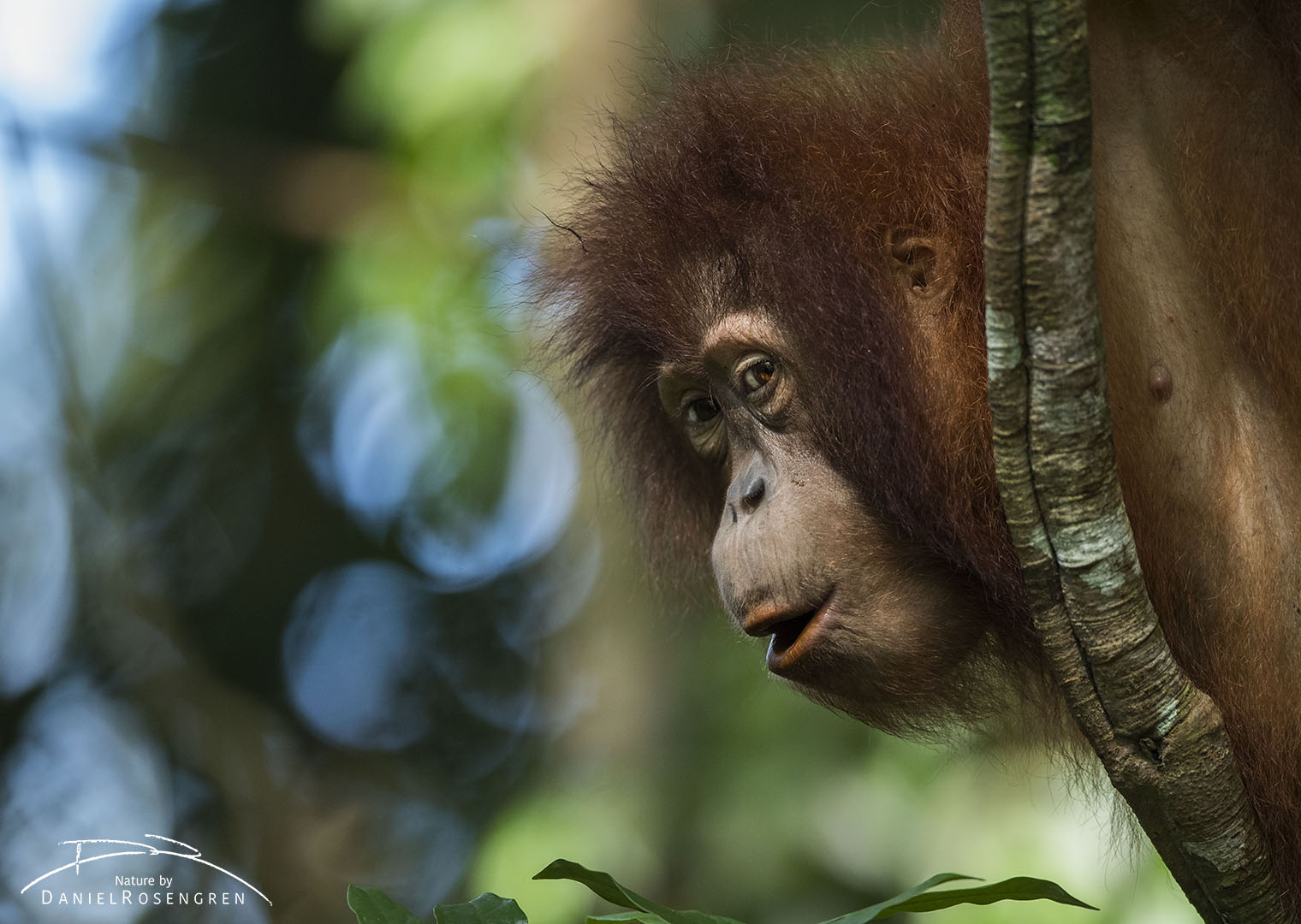
The cheekiest student in jungle school, Suro, always looking for mischief. © Daniel Rosengren
Bukit Tigapuluh actually means the thirty hills and I often found myself on a steep slippery slope trying to keep up with the Orang-utans. I soon adopted a way to move not entirely different from the way the Orang-utans moved. By gripping small trees, holding on and pulling myself forward I also move from tree to tree, but of course always with my feet on the ground.
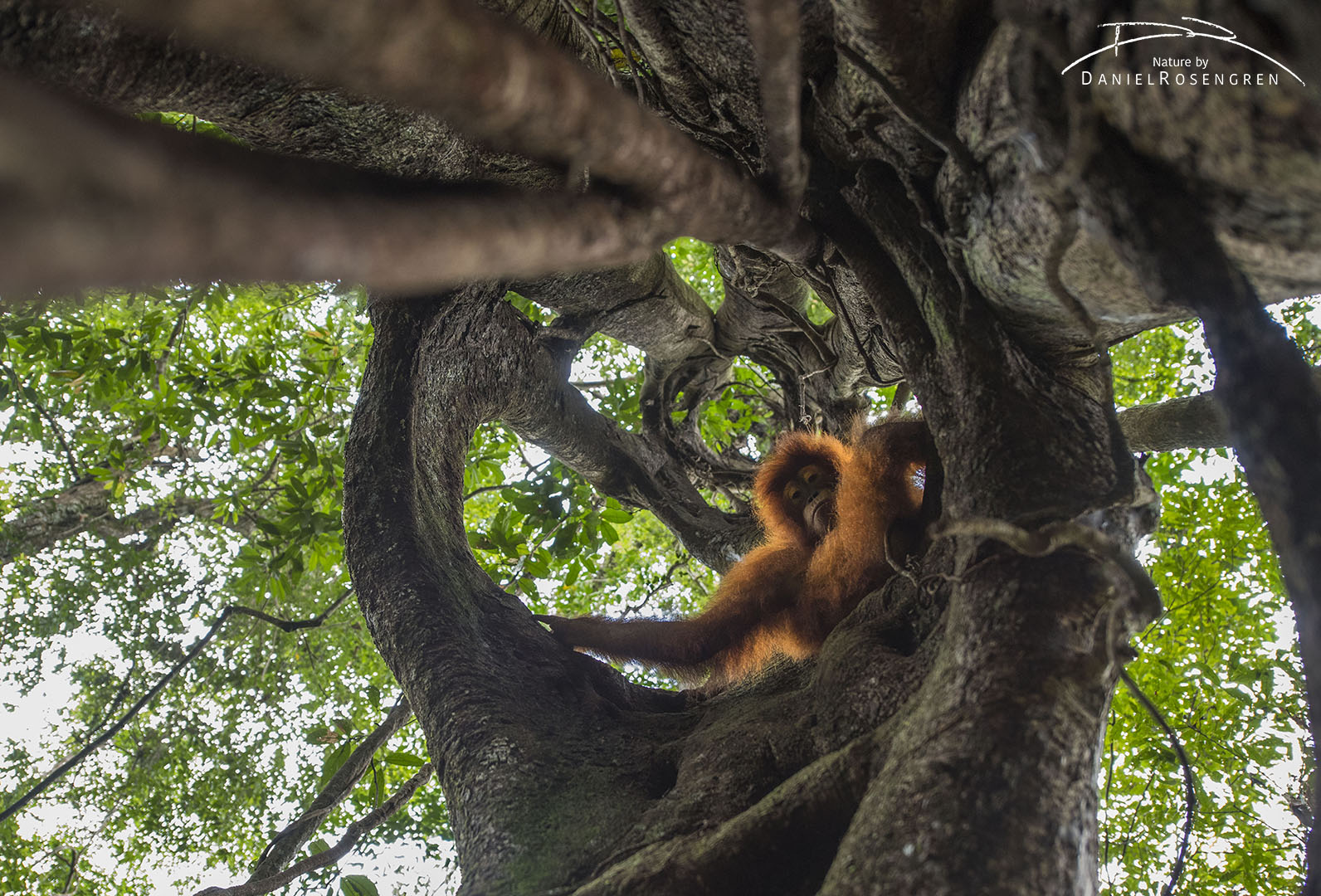
A Orang-utan enjoying sitting in a Strangler fig. © Daniel Rosengren
One of the highlights of this assignment was when I decided to climb up a strangler fig tree. This hollow tube of a tree was easy enough for me to climb. I could tell that the Orang-utans found it unusual for a human to be in a tree and I instantly had two of them clinging on to me up in the tree, smiling brightly with their eyes. They used my legs as another twig to hang from, they sat in my lap and Suro, the cheeky one, stole my glasses. A moment later though, she kindly offered them back to me.
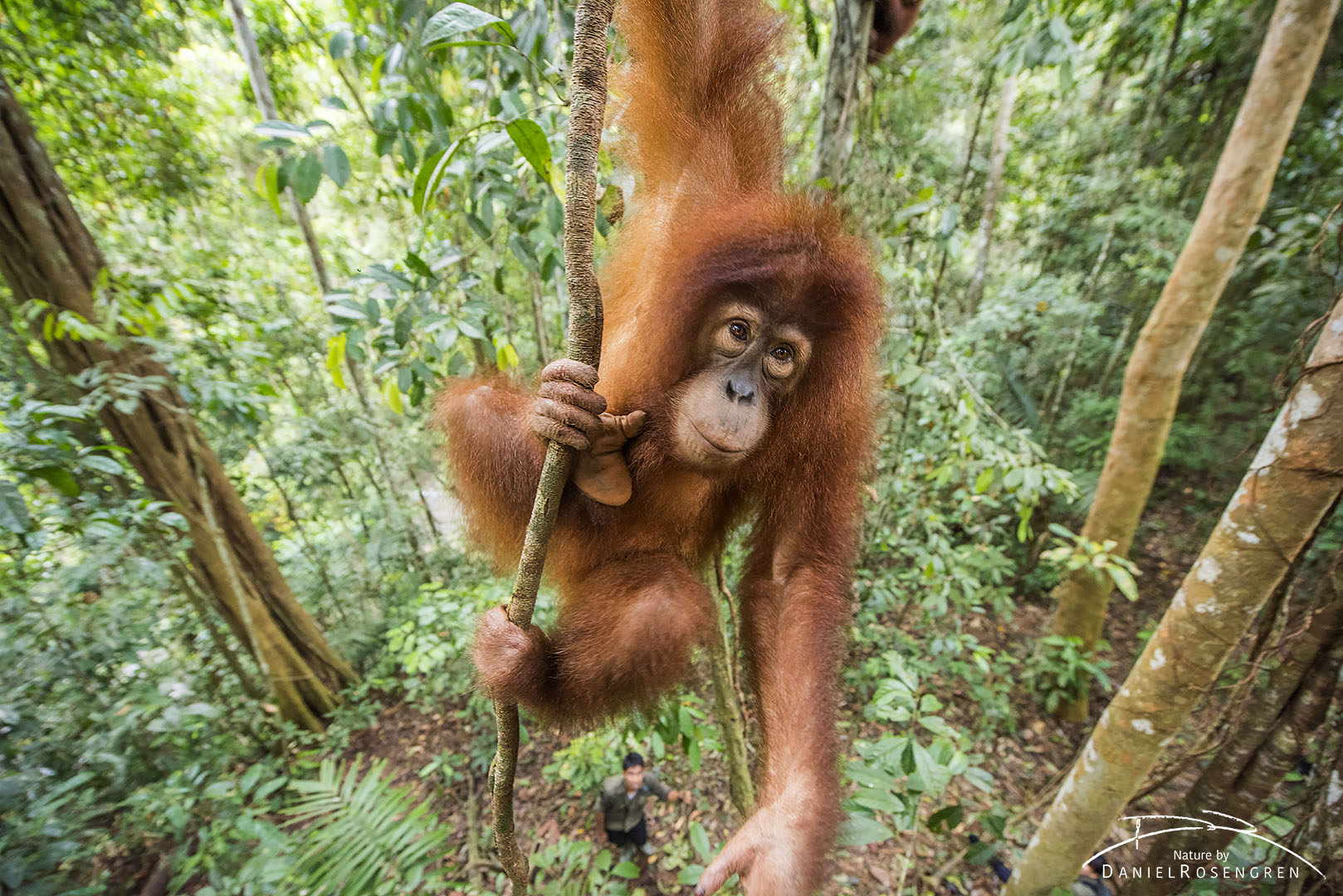
A young Orang-utan out on a limb, her trainer is seen below. © Daniel Rosengren
Taking photos of the Orang-utans from their perspective, from up a tree, really made a difference. Instead of shooting up, I was shooting at the same level as them or even down at them. This gave quite a nice feeling of being in their environment, on their conditions.
The project that train these Orang-utans is a highly successful one. It is led by Peter Pratje and the Frankfurt Zoological Society. Today, more than 160 individuals have been released into the wild and this project has a higher level of survival than any other Orang-utan release programme in Indonesia. This is it for now, I will get back with more stories from this place later.
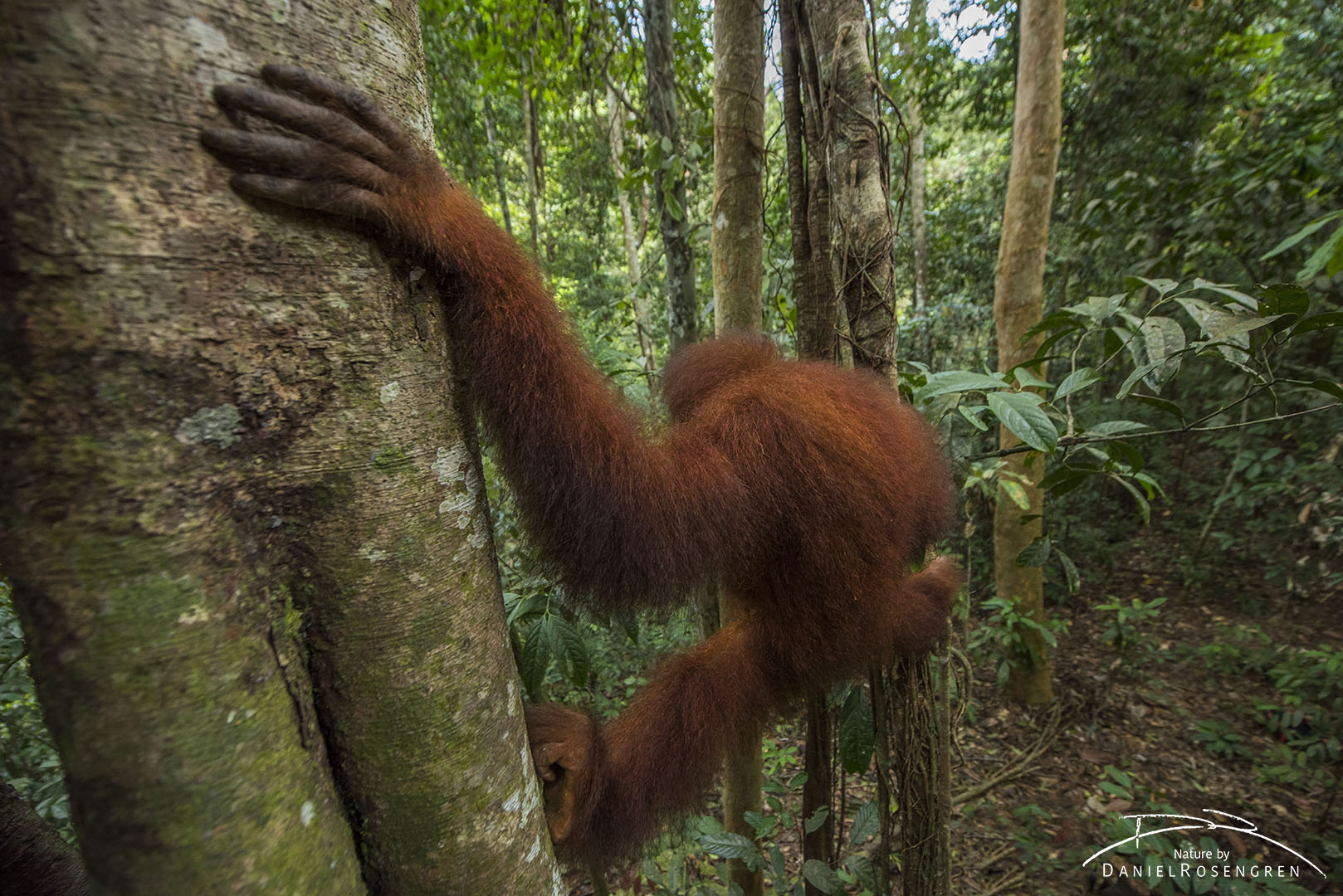
A Sumatran Orang-utan climbing in the forests of Bukit Tigapuluh. © Daniel Rosengren
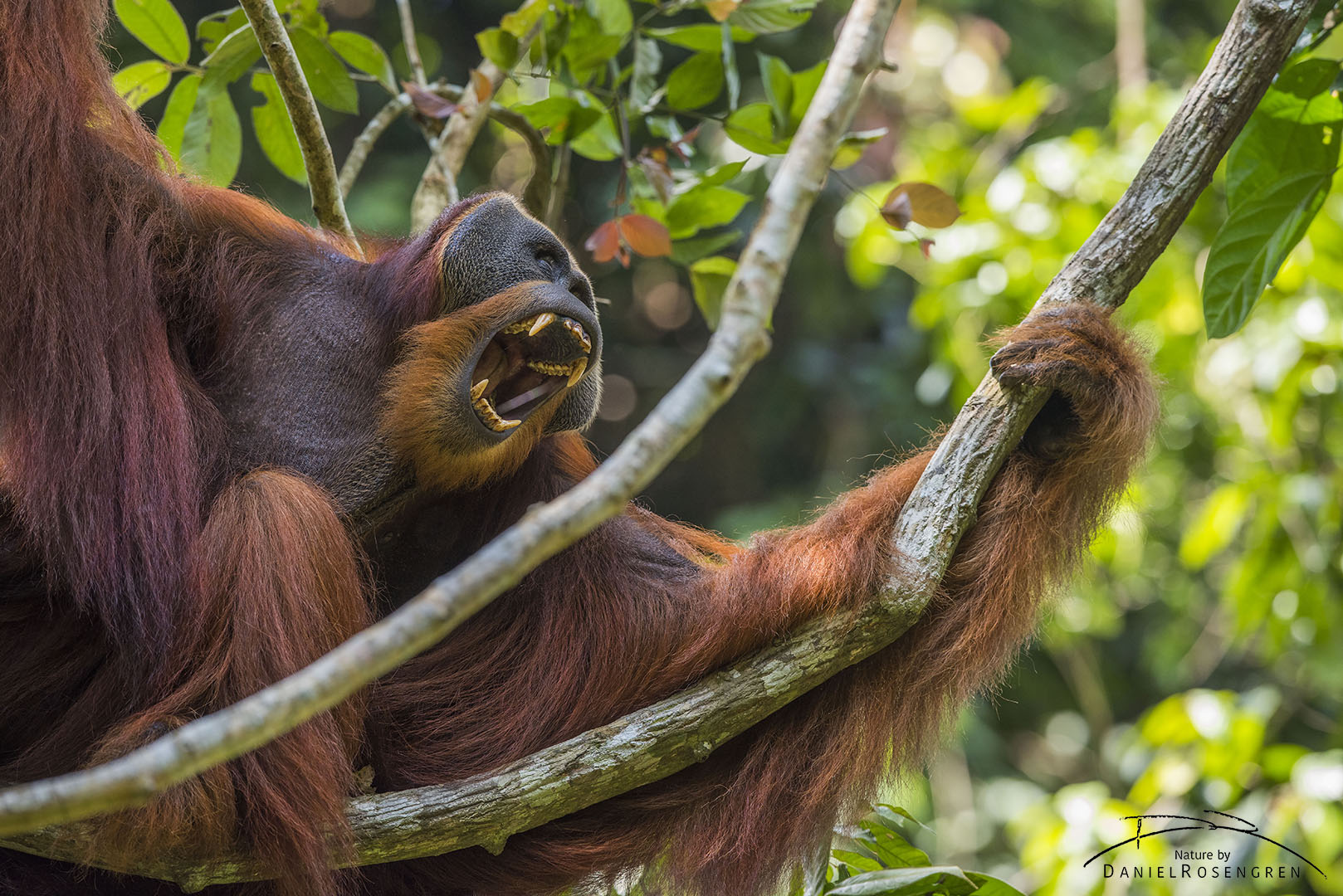
This huge male, Win Gayo, was once a jungle school student and is now one of many successfully re-introduced Orang-utans in Bukit Tigapuluh. © Daniel Rosengren
See more photos in the Sumatra Gallery
